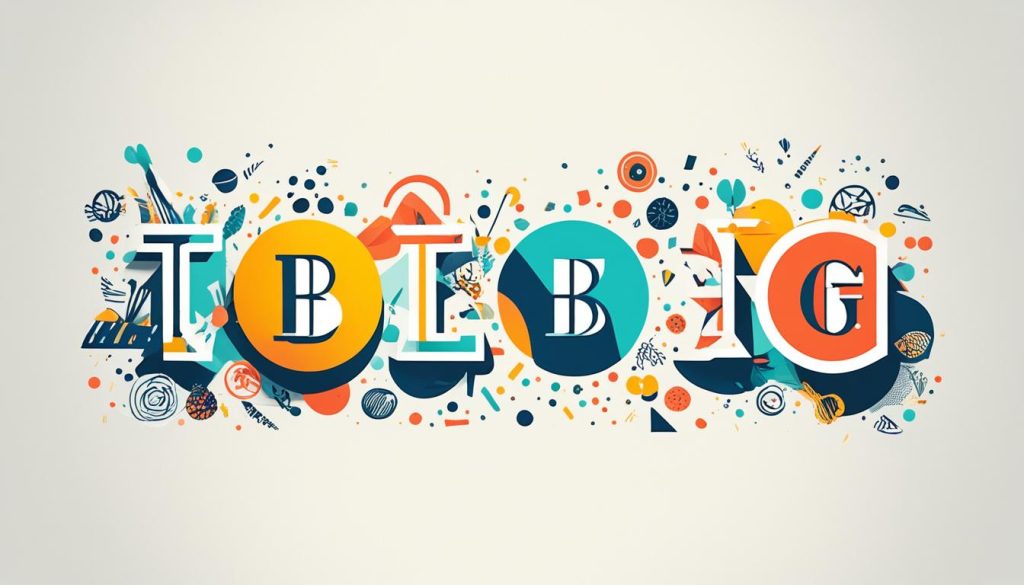I’ve taken on the challenge of running three blogs at once. It’s a journey filled with rewards and insights. I’m here to share my strategies for managing multiple blogs effectively. This article will help you turn your blogging dreams into reality.
In today’s digital world, blogging can be a fulfilling career. But, it requires optimizing your workflow and boosting productivity. You must keep the passion that drew you to blogging1.
I’ll share my journey of managing three blogs. They cover my wife’s health, home décor, and my blogging passion. I’ll discuss strategies, tools, and techniques to run these blogs well. This guide aims to help you improve your blogging, whether full-time or part-time.
Let’s explore how to manage multiple blogs like a pro. We’ll discover strategies and tools to make you more efficient and successful, no matter how many blogs you have23.
Starting a Blog: Rewards and Opportunities
Starting a blog opens up a world full of exciting rewards and opportunities. Blogging lets you become a credible expert in your field. You can also earn a part-time or full-time income. According to Ambition Box, bloggers in India can make an annual income of INR 3 lakh to INR 5.8 lakh, with an average of INR 3 lakh4.
Building Credibility and Earning Income through Blogging
Blogging connects you with people who share your interests and passions. It’s a creative way to write, edit, and design. You can document your experiences and thoughts in one place. The blog “Blog Growth Engine” makes $5,000, $10,000, and even $50,000 a month, showing the potential of successful blogs5.
Starting a blog is also affordable. Web hosting costs from INR 150 to INR 5,000 a month, depending on speed and storage. Web builders range from INR 500 to INR 5,000 for customization and flexibility4.
With the right strategy and dedication, blogging can help you build credibility and connect with your audience. It can even generate a substantial income. The rewards and opportunities of starting a blog are exciting and worth exploring456.
The Evolution of Blogging: From Personal Journaling to Content Marketing
Blogging has changed a lot over the years. It started as a way for people to share their thoughts online. Now, it’s a key part of how businesses and individuals share information and market themselves7.
At first, blogs were like online diaries. People shared their lives and ideas with a few friends. But as the internet grew, blogging changed. It became a way to share knowledge and connect with more people8.
- Now, blogs are a key part of marketing plans. Companies use them to share news, become experts, and talk to their audience8.
- Content marketing made blogging a business tool. Today, 65% of content marketers have a plan for their blogs, showing how important it is7.
- Bloggers now offer more than one blog to reach different people and topics7.
| Metric | Value |
|---|---|
| New blog posts published on WordPress each month | 70 million7 |
| People viewing over 20 billion pages on WordPress.com each month | More than 409 million7 |
| Average blog post length in 2023 | 1,416 words7 |
| Bloggers who write 2,000+ word posts | Only 14%7 |
| Bloggers who publish new content 3-6 times per month | 44%7 |
Blogging has changed how we make and share content8. It’s now a key tool for getting more website visitors, building a brand, and making sales8.
The role of blogging in marketing will keep growing. By using blogging, businesses and people can better reach their audience and engage with them8.
The shift from personal to business use shows how blogging has adapted. As technology changes, blogging will keep being crucial for sharing ideas, building brands, and succeeding in business978.
7 Reasons to Start a Blog
Blogging has become a powerful tool with many benefits. It lets you share your life, be creative, or even make money. Starting a blog can change your life for the better10. Bloggers can make more money from their blogs than traditional jobs10. Some bloggers make more in a month than they did in a year at their old job.
Document Your Experiences and Thoughts
Blogging lets you keep track of your life, thoughts, and views online10. It helps you grow in confidence, letting you share your knowledge and ideas freely10. The blogging world is supportive, where bloggers help and support each other, not just compete.
Creative Outlet for Writing, Editing, and Design
Blogging is a place to improve your writing, editing, and design skills10. Websites with regular, quality blog posts get higher rankings on search engines10. This means blogging can help you reach the right people for your business or cause.
Blogging can also make a difference in the world10. You can promote eco-friendly living, help with weight loss or debt, or connect people with similar interests10. Many bloggers have even turned their blogs into book deals, showing off their writing talent.
In summary, there are many reasons to start a blog101112. It’s a journey of growth, learning, and connecting with people all over the world101112.
Addressing Common Misconceptions About Blogging
Many people think starting and running a blog is hard and costly. But, you can start a blog for free with just an internet connection13. Even if you pay for a custom website or domain, the cost is low compared to what you might earn13.
Some believe blogging is fading away. But, the blog world is just more crowded now, not dead13. Success comes from building a loyal audience and offering content that stands out.
Blogging Is Not Expensive or a Dying Medium
You can begin a blog for free with an internet connection13. Platforms like Wix, Web.com, and Squarespace start at $17 to $23 a month13. The idea that blogging is dying is wrong13. It takes more effort now, but you can still make a successful blog.
Perfection Is Not Required, and You Don’t Need an Existing Following
It’s a myth that every blog post must be perfect from the start13. You can always edit and improve your posts later13. You don’t need to be an expert or have followers to start a blog13. Blogging helps you learn about writing, marketing, and web skills, which are valuable in your career or business.
Blogging isn’t quick money14, but it can become a full-time job with hard work and smart strategies14. The idea that blogging is easy is wrong, as it involves many tasks like finding your niche, researching competitors, understanding your audience, and more13.

In conclusion, the myths about blogging – that it’s expensive, dying, requires perfection, and needs followers – are false. Blogging can be rewarding and profitable for those ready to work hard and challenge these myths131415.
Step-by-Step Guide to Starting a Blog
Define Your Topic, Do Competitor Research, and Identify Your Audience
Are you ready to start a blog? This guide will help you get started. First, pick a topic or niche for your blog. Choosing a topic that’s profitable and engaging is key to success16. It’s important for businesses to have a clear blog topic and purpose16.
Then, research your competition. This will help you make content that stands out16. A successful blog needs different roles, like coming up with ideas, doing SEO, editing, promoting, and more16.
Next, figure out who your audience is. Knowing your readers will help you create content they’ll love16. Good content keeps readers coming back and loyal16. Calls to action are key to getting more traffic, conversions, and sales16.
By picking your topic, checking out your competitors, and knowing your audience, you’re ready to start a successful blog16. Being consistent with your content keeps your audience engaged and makes you a thought leader in your field16.
https://www.youtube.com/watch?v=XmcTXhvwphU
Remember, one blog makes $1500-$3000 a month from affiliate marketing17. Another product made $3111.63 in a month, and another $856.0017. Blogging can be very profitable if done correctly.
| Blogging Platform | Hosting Provider | Uptime Rate |
|---|---|---|
| Wix | BlueHost | 99.95% or higher |
| – | HostGator | 99.95% or higher |
| – | GoDaddy | 99.95% or higher |
| – | DreamHost | 99.95% or higher |
When starting a blog18, picking a platform is the first step18. Wix is a good choice for its customizable templates18. Many platforms offer free starts, and hosting options like BlueHost, HostGator, GoDaddy, and DreamHost are popular18. Look for hosting with a good uptime, bandwidth, and support, aiming for 99.95% uptime or higher18.
In conclusion, define your topic, research your competitors, and know your audience to start a successful blog16. Businesses see more revenue, better brand awareness, and more conversions with great blog content16. Blogging can be very profitable if done right.
Naming Your Blog and Creating Branding Elements
Choosing the right blog name and setting up consistent branding is key in blogging. Your blog’s name should be easy to remember, catchy, and match your niche or brand19. It’s a vital part of your branding strategy, making your blog stand out in a crowded online world19. The name and domain together make a big impact on potential readers.
You also need to pick a font, color palette, and maybe a custom logo for a professional look. 10 essential elements of a successful blog include great images and a pinnable image for Pinterest, which should be vertical and 600 x 900 in size20.
The blog name and branding are important19, but quality content, reader engagement, and value are even more key for success19. Apple shows that a good brand name helps, but it’s the products and value that really drive success.
To make a great blog, focus on building a strong brand identity. But don’t spend too much time on the name. Instead, focus on making content that speaks to your audience. Structured blog posts with headings, images, and formatting can also boost your search engine rankings21.
| Blogging Branding Elements | Why They Matter |
|---|---|
| Blog Name | Creates a memorable identity and makes a strong first impression on readers |
| Font | Helps with the blog’s look and readability |
| Color Palette | Strengthens the blog’s visual brand and gives it a cohesive look |
| Custom Logo | Gives a professional touch and makes the blog more recognizable |
Remember, while naming your blog and building your brand are crucial, your blog’s success depends on the quality and relevance of your content. Focus on giving value to your readers, and everything else will fall into place19.

Claiming a Domain Name and Choosing a Hosting Site
Starting your online journey means picking a domain name and finding a good hosting site. Having your own domain makes your blog look more professional22. It’s also key to pick a hosting service that can handle your blog’s growth22.
Choosing the right domain name is important. There are over 360 million domain names registered worldwide, with “.com” being the top choice for its trustworthiness22. People often type “.com” by default when entering a domain22. Using keywords in your domain can boost your search engine ranking22. Experts suggest keeping your domain short, under 15 characters, for easier typing22. Avoid hyphens or double letters to dodge spam and typo issues22.
For hosting, there are many reliable options. Many hosting services offer a free domain when you sign up22. The first year is usually free, then it’s about $14 a year22. Domain.com is a top domain registrar22. Red Points’ Domain Management Software helps find, claim, and manage domains for your brand23.
| Domain Registrar | Starting Price | Renewal Cost | WHOIS Privacy |
|---|---|---|---|
| Domain.com | $8.9924 | $13.9924 | Yes |
| Namecheap | $5.9824 | $14.5824 | Yes24 |
| Spaceship | $8.4824 | $9.5524 | Yes24 |
| Wix | $824 | $824 | No24 |
When picking a domain and hosting, do your homework and compare options. Choose what fits your blog’s needs and future plans. This careful choice sets the stage for a successful and professional blog.

The Importance of a Social Media Strategy
As a blogger, having an active social media presence is key to your online success. Creating a strong social media strategy is the first step. This means setting clear social media goals, knowing your target audience, and being aware of social media challenges like low engagement or algorithm changes.
Setting Goals, Understanding Your Audience, and Identifying Challenges
Start by setting SMART (Specific, Measurable, Achievable, Relevant, and Time-bound) goals25. These goals can be anything from increasing brand awareness to driving website traffic and building connections with your audience. Clear objectives help you track progress and make smart social media decisions.
Knowing your target audience is vital25. This means researching social media trends, doing surveys, and creating buyer personas. You might discover your audience loves Instagram and LinkedIn. They prefer visually engaging and informative content.
It’s also key to spot potential social media challenges you might face25. These could be changes in algorithms, shifting content preferences, or the need to adapt your strategy. By tackling these issues early, you can stay ahead in the ever-changing social media world and keep your blogs successful.

In summary, a detailed social media strategy is crucial for managing multiple blogs. By setting goals, understanding your audience, and preparing for challenges, you lay a solid foundation for your social media. This approach sets your blogs up for long-term success262725.
Creating Content for Multiple Social Media Accounts
As a savvy social media marketer, I know how important it is to make engaging content for different platforms. It’s key to mix original content with industry posts28.
About 60% of people worldwide use social media28. With most people using 6.7 social platforms each month29, having a good content plan is crucial. I use a mix of new, shared, and user-created content to keep my audience interested and connected across various platforms28.
Mastering the Art of Content Curation
Original content is key, but sharing relevant content is also important. I pick articles, videos, and insights that fit my audience’s needs28. This mix of content educates and motivates my followers28.
Gartner’s Global Software Trends and Buyer Insights 2022 e-book shows that localized content is valued by software buyers28. I adjust my posts to meet my audience’s specific interests. This balance keeps my social media channels lively and useful.
Leveraging Automation for Efficient Content Scheduling
Creating and scheduling content for many social media platforms can be hard. But, tools like Hootsuite make it easier. It lets me manage up to 35 social profiles in one place29. This tool helps me post at the best times to get more engagement28.
Trying out different content types and schedules is important. I keep testing to see what my audience likes best28. By checking how my content does, I can improve my strategy. This way, I make sure my brand’s message gets to the right people at the right time.

The secret to doing well with content for many social media accounts is finding the right mix of new and shared content. Using automation tools and always checking and improving my strategy helps. By being flexible and making smart choices, I keep my brand’s social media strong, engaging, and relevant to my audience’s changing needs28.
Using a Social Media Management Tool
Managing social media can be tough, especially with many accounts on different platforms. Using a social media management tool like Planable can make it easier. It helps with scheduling, working together, and getting approvals30.
Planable has an easy-to-use interface and customizable calendars. This helps you stay organized and keep up with your social media. It also has features that save time, letting you focus on making engaging content and growing your online presence30.
Benefits of Planable for Managing Multiple Accounts
Using a social media management tool like Planable has many benefits for handling multiple accounts. Here are some key advantages:
- Centralized Content Scheduling: Planable lets you schedule posts for many accounts and platforms at once. This keeps your social media consistent and coordinated30.
- Enhanced Collaboration and Approval Workflows: Planable makes it easier to get content approved. Team members can review and give feedback before it goes live. This keeps your brand consistent and quality high31.
- Improved Reporting and Analytics: Planable’s analytics give you insights into how your social media is doing. This helps you make smart decisions and improve your content strategy31.
- Time-Saving Automation: Planable’s automation tools cut down the time and effort needed to manage your social media. This lets you focus on more important marketing tasks30.
With a comprehensive social media management tool like Planable, you can boost your productivity and online presence. This leads to better success in your social media marketing31.
In today’s digital world, having a strong social media strategy and the right tools is key. Planable’s features and customization make it a great choice for managing many social media accounts well and efficiently303132.
Running 3 Blogs Manage Effectively
Managing three blogs at once has its ups and downs. I’ve learned to use smart workflows, tools that boost productivity, and a strong social media presence. These strategies have helped me grow each blog into a successful business. I’ll share how I’ve achieved this efficiency in the following sections.
Niche blogging is a key strategy for me. Focusing on specific topics has built a loyal audience for each blog. This has boosted my daily visitors from 900 to 25,000 on 20 niche blogs33. My content library has grown from 1,000 pages to over 11,000 across 20 blogs33. My earnings have also jumped, from a few dollars a day to a few hundred33.
Keeping a regular content schedule is crucial. I aim for 7-8 posts daily on general blogs and 1-2 on niche ones33. This balance keeps my content fresh and attracts more readers from search engines33. My niche blogs also draw in private advertisers and sponsors, increasing my income33.
To handle my blogs, I’ve found social media tools like Planable34 invaluable. They help me plan, schedule, and work with others efficiently. With these tools, I’ve grown my online presence and reached a high level of efficiency.
| Metric | Single Blog | 20 Niche Blogs |
|---|---|---|
| Daily Visitors | 900 | 25,000 |
| Number of Pages | 1,000 | 11,000 |
| Daily Revenue | $1-$5 | $100-$500 |
| Posts per Day | 7-8 | 1-2 |
Managing multiple blogs well needs a strategic plan, the right tools, and consistent effort. By using the strategies I’ve shared, I’ve turned my writing passion into a successful online business. If you’re starting or scaling your blogging, consider niche blogging and social media tools333435.
Leveraging a Social Media Calendar
Managing multiple social media accounts is easier with a social media calendar. This tool helps with planning and scheduling your content. It offers more than a simple spreadsheet can. Tools like Planable add advanced features that boost your content planning.
Spreadsheets vs. Social Media Tools for Content Planning
Spreadsheets are a common way to manage social media content. They let you organize posts, keep track of schedules, and work with your team. But, social media management tools offer more benefits.
These platforms have customizable labels, various content views, and easy drag-and-drop features. This makes planning content more efficient and fun36.
| Feature | Spreadsheets | Social Media Tools |
|---|---|---|
| Customizable Labels | Limited | Robust |
| Content Views | Linear | Multiple (Calendar, Grid, Table) |
| Scheduling | Manual | Automated |
| Collaboration | External Tools | Integrated |
| Reporting | Basic | Advanced Analytics |
Choosing between spreadsheets and social media tools for content planning depends on your needs and team size. The right tool can greatly improve your content creation and publishing. It helps you focus on engaging with your audience and achieving meaningful results37.
Implementing Collaboration and Approval Processes
Managing many blogs and social media accounts needs a good plan for working together and checking content. Collaboration Processes and Approval Workflows are key to getting content out on time and keeping it good quality. Using Feedback Management systems helps avoid delays and keeps your team working together well. This makes your content creation and sharing better.
Streamlining Feedback and Approval Workflows
Tools like Planable make giving and getting feedback easy, help with keeping track of changes, and make approving content smoother. This keeps you organized and efficient38. Getting feedback from employees can make them happier and more dedicated38. Getting feedback from customers can make them happier and more loyal, which can lead to more sales38. Feedback helps people learn and set goals, making them better38. Personal feedback can motivate people to improve themselves38. Feedback in sales can help improve sales strategies, leading to more sales and happier customers38. Feedback on quality helps make things better in the future.
39 Almost every business uses some kind of approval process every day39. Bad approval processes can hurt a business’s performance, taking more time and resources to get things done39. Good approval processes need to have clear steps, who approves, when it’s due, who can see it, and a record of what happened39. In some fields, keeping a detailed record of approvals is a must39. Having a standard way of approving things makes it faster and more efficient, cutting down on mistakes and confusion39. A better approval process can make projects finish faster, reduce delays, and make things more efficient.
40 48% of marketers say bad communication stops them from making more content40. 31% say they don’t have a clear way of making content39. Problems with approval include slow email approvals and trouble keeping track of changes39. Using workflow tools to manage versions is key to solving these problems.
By Clearly defining roles and responsibilities in reviews, Establishing deadlines, and Developing a review and approval workflow, you can make your team work better together. This leads to better management and sharing of content.
Scheduling Posts in Advance for Multiple Accounts
Scheduling posts in advance is a top way to save time when managing many blogs and social media accounts41. It helps you plan your content, keep up a steady posting schedule, and give you more time for other tasks. You can use a spreadsheet or a social media management platform to schedule posts on several accounts at once42.
Tools like X Pro have advanced features for busy bloggers and social media managers41. They let you schedule posts ahead of time, organize them by topic or event, and use powerful search tools to find and schedule content better41.
- X Pro lets you schedule posts ahead, which is great for managing many accounts41.
- Posts in X Pro can be seen by anyone with access, which is good for corporate teams41.
- Collections in X Pro help you group posts by topic, event, or interest in real-time41.
- X Pro has strong search tools like typeahead search, sentiment analysis, and more to help you find content41.
There are many other social media scheduling tools out there, each with its own special features42. Tools like Hootsuite, Sprout Social, Canva Pro, and HubSpot offer great scheduling and management for many social media platforms42.
| Tool | Supported Platforms | Key Features |
|---|---|---|
| Hootsuite | Facebook, Twitter, Instagram, LinkedIn, YouTube | Scheduling, analytics, team collaboration |
| Sprout Social | Facebook, Twitter, Instagram, LinkedIn, Pinterest | Advanced analytics, publishing, engagement, and reporting |
| Canva Pro | Facebook, Instagram, Twitter, LinkedIn | Scheduling, design tools, content creation |
| HubSpot | LinkedIn, Facebook, Instagram, Twitter | Management, CRM integration, content scheduling |
Choosing a social media scheduling tool can make managing your content easier and more efficient43. By planning and scheduling your posts, you can keep your content fresh and engaging for your audience43. This also frees up time for other important parts of your online presence43.
Measuring and Showcasing Social Media Success
It’s key to keep an eye on how well your social media is doing. By looking at things like engagement, reach, and conversions, you can see what’s working. This helps you make smart choices for your content and show off your success to others44. Tools and reports can help prove the worth of your social media work.
Important things to watch include how many followers you get, how engaged they are, and how many turn into customers44. It’s important to match these metrics with your goals for your campaigns44. Tools like Meltwater give you deep insights from social media with AI help44. Their reports can show how your social media efforts are making a difference to bosses44.
But it’s not just about what happens on the platforms. Things like how engaged people are, how many new followers you get, and how much traffic your site gets from social media matter too45. Looking at social media analytics gives you the details you need to see how well your plans are working. This helps you figure out your return on investment and see where you can stand out by looking at what your competitors do well45.
Source Links
- https://www.ryrob.com/blogging-strategy/
- https://planable.io/blog/guide-managing-multiple-social-media-accounts/
- https://blog.hubspot.com/marketing/how-to-start-a-blog
- https://www.forbes.com/advisor/in/business/start-a-blog/
- https://www.adamenfroy.com/how-to-start-a-blog
- https://www.successunscrambled.com/start-a-blog/
- https://optinmonster.com/blogging-statistics/
- https://blog.hubspot.com/marketing/the-benefits-of-business-blogging-ht
- https://contentmarketinginstitute.com/wp-content/uploads/2012/04/CMI_Ultimate-Blogging-final.pdf
- https://www.productiveblogging.com/reasons-you-should-start-a-blog/
- https://bloggingwizard.com/reasons-to-start-a-blog/
- https://www.positional.com/blog/blogging-for-business
- https://www.forbes.com/advisor/business/start-a-blog/
- https://digitalnomadandadog.com/is-blogging-still-profitable/
- https://www.productiveblogging.com/blogging-explained/
- https://blog.hubspot.com/marketing/blog-strategy-guide
- https://whatskatieupto.com/how-to-start-a-blog/
- https://www.wix.com/blog/how-to-start-a-blog
- https://www.ryrob.com/how-name-blog/
- https://www.productiveblogging.com/essential-elements-successful-blog-post/
- https://kontent.ai/blog/how-to-structure-blog-post/
- https://www.wpbeginner.com/beginners-guide/tips-and-tools-to-pick-the-best-domain-for-your-blog/
- https://www.redpoints.com/blog/how-to-claim-a-domain/
- https://www.forbes.com/advisor/business/how-register-domain-name/
- https://www.agorapulse.com/blog/social-media-management/
- https://sproutsocial.com/insights/social-media-management/
- https://sproutsocial.com/insights/social-media-marketing-strategy/
- https://www.sprinklr.com/blog/manage-multiple-social-media-accounts/
- https://blog.hootsuite.com/manage-multiple-social-media-accounts/
- https://buffer.com/library/social-media-management-tools/
- https://www.brandwatch.com/blog/social-media-management-guide/
- https://zapier.com/blog/best-social-media-management-tools/
- https://problogger.com/one-blog-many-cateogories-or-many-blogs/
- https://www.semrush.com/blog/blogging-tips/
- https://www.theminimalists.com/blog/
- https://sproutsocial.com/insights/building-social-media-presence/
- https://blog2social.com/en/blog/7-strategies-to-manage-multiple-social-media-accounts-effectively/
- https://govisually.com/blog/optimizing-the-review-and-approval-process/
- https://www.aproove.com/blog/how-to-create-and-optimize-an-approval-process
- https://blog.gainapp.com/content-approval-systems/
- https://help.x.com/en/using-x/advanced-postdeck-features
- https://blog.hootsuite.com/social-media-scheduling-tools/
- https://www.growthcollective.com/blog/social-media-scheduling-tools
- https://www.meltwater.com/en/blog/measure-social-media-campaign-success
- https://sachsmarketinggroup.com/how-to-measure-social-media-marketing-success/

